The Kinship of Suffering, Evil, and Injustice
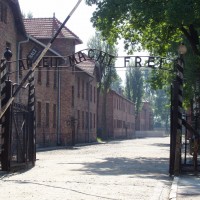
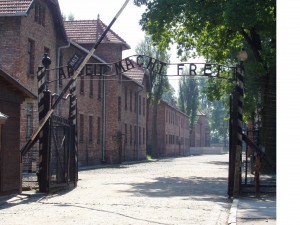
The infamous gate at Auschwitz
Dark family secrets – even those that are unrecognized and unacknowledged by their holders – are certainly part of the human condition. Such wellsprings of pain may be very narrowly defined in space and time (involving perhaps only one nuclear family’s particular, momentary brush with evil), or they may be broadly collective, spanning continents and generations (like the forces of genocide, slavery, or other forms of oppression). In all such cases, the linkages involved always touch more than the individual who is struggling to fight free.
My own story of how I came to identify this theme as an essential part of this website involves the story behind some of the courses I have created and taught over the years. But even long before I ever set foot in college as a student, let alone as a professor, I was impelled (as also, it turns out, have been many of my students, over the years) to seek out in public libraries all the books I could find about the Holocaust, or concentration camps. Why did I “just have to” read everything I could get my hands on written by Elie Wiesel? I will never know, nor do I even think this is a worthwhile question to pursue further.
In any case, teaching at a wonderfully supportive liberal arts university, I was encouraged to create the course I would have loved to take myself. This was in the early 1980s, and the course was called “Moral Consciousness and Social Action”. My goal here was to explore with my senior-level students some of the deepest moral problems endemic to both left and right-wing totalitarian systems, so I plunged myself into the writings of Hannah Ardent and Jurgen Habermas while seeking out first-person accounts written by survivors of both Nazi genocide and the Stalinist gulag.
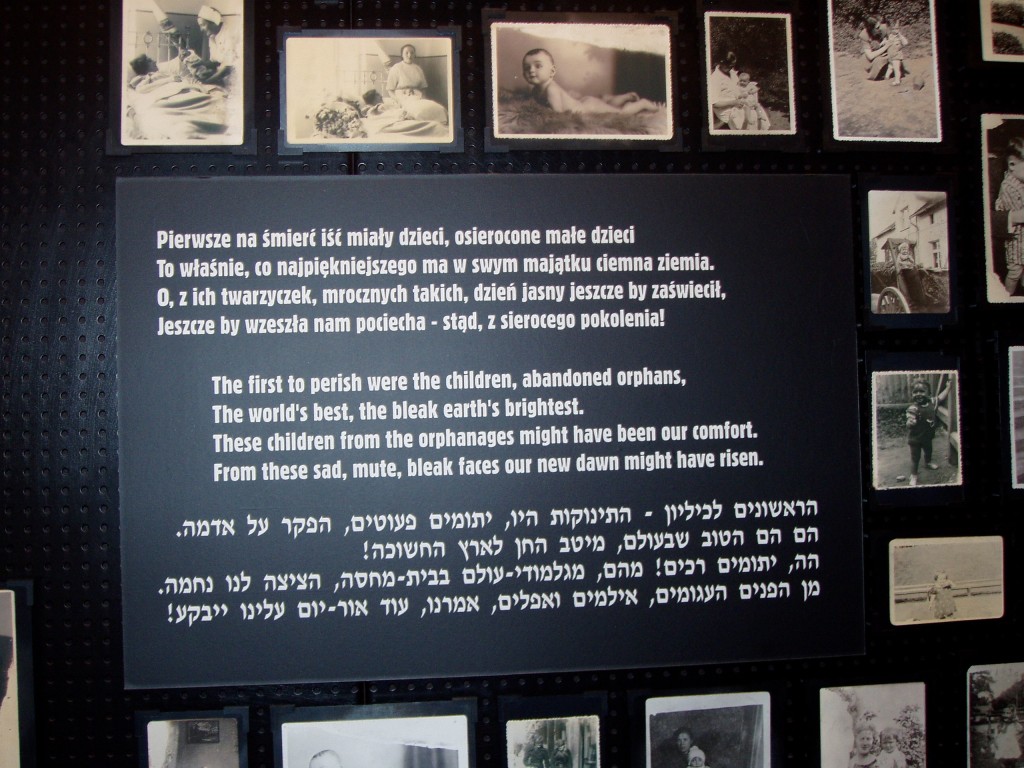
“The first to perish were the children” – pictures found among the remains of Auschwitz-Birkenau now displayed on a wall in the Auschwitz Museum
Here comes the first unexpected tangle. In 1983 I had my first child, and as I returned to the classroom nine days after giving birth, this new little love of my life was in my mind throughout every line of text I was reading for my class preparation. I had been totally unprepared for the effect my now being a parent would have on my re-reading of the books and accounts I had already read several times previously for this class. That realization – the profound and stunning insight that I was now part of a link of generational continuity that was and is overwhelmingly suffused with love – permanently changed the way I would talk about evil in my classes.
Fast-forward two decades later. Because of my association with this “Holocaust class”, I was asked by the then-chaplain of my university to lead a small group of our students, in conjunction with a much larger group of 150 mainly US and Canadian college students, to take part in a brief study-tour of three death camps built by the Nazis in Poland. By this time I had a second son, who was then a teenager in high school. I accepted the offer instantly, once I added the proviso that this son would accompany me and the small group of college students from our campus.
Together we spent a whirlwind week in Poland (prefaced by an even more compressed orientation near our group’s departure site in the JFK Airport area). We travelled in Poland exclusively by tour bus, with each of the five buses peopled by 30 students and staffed by a faculty advisor from one of the participating educational institutions, a Polish guide, an Israeli guide, a Holocaust survivor (most of whom had been children during the time of the Holocaust), and a few other non-guide program assistants. Our LOT flight landed in Warsaw, where we immediately boarded a bus that would take us to stay in a hotel in Kraków, which served as our home base for our first death camp visit: Auschwitz.
I had been to Auschwitz once before, following the first year of my full-time university teaching career. Then, I had been part of a six-week summer Polish language program at Jagiellonian University in Kraków (with most of the participants being US or Canadian citizens who were considered to be part of “Polonia” – the diaspora of Polish emigrants and their descendants). The trip we took to Auschwitz at that time was thus aimed at teaching Polish-Americans about their (ethnicity-affirming) Polish history, and while there might have been Jewish participants in the program, the vast majority of participants were Catholic or came from Polish Catholic family backgrounds, so the program’s preparation for this visit to Auschwitz gave only basic attention to the exceedingly difficult and complex question of Polish anti-Semitism in relation to the Holocaust.
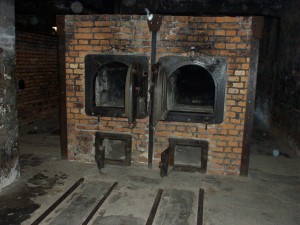
Crematorium ovens and tracks for the disposal of the human ashes – Auschwitz
Such was not the case for the trip I took there with my son 24 years later. On this trip, it was the Christian students (numerically the majority, but emotionally, not the center of the experience) who were more likely to feel like outsiders, standing respectfully and silently as individual Jewish students lit and placed memorial candles on the railroad tracks leading to the end of the line at Birkenau. I have much more to say and write about this particular trip, but for the purposes of introducing this section of this website, what is important is to acknowledge how complicated and tangled all the skeins of associations are when trying to articulate an answer to the question I get asked so often: “Why do you spend so much time thinking about Auschwitz (or genocide, or racism, or deadly intolerance)?
Perhaps a better way to end this particular piece of writing is to answer this obliquely instead of directly, referring here briefly to an email conversation I had with a friend of mine when I was telling her about the long-range writing project I am planning that will allow me to explore that question more comprehensively.
Explaining to her my horror at finding out more than I ever wanted to know about anti-Semitism in Poland, I must have made a statement to the effect that, even though neither I nor my immediate family had anything to do with the Holocaust as it unfolded in Poland, and even though I have learned a great deal about the valiant efforts of Poles recognized by Yad Vashem as “Righteous among Nations” for their work rescuing Jews during that horrible time, I still feel a profoundly unsettling sense of something like guilt by association – as a human being who identifies herself as coming from Polish roots. She understood immediately, due to yet another skein of tangled linkages connected my thoughts with her life experience. While researching her family genealogy on Ancestry.com, she had discovered a connection between one of her ancestors and the practice of slavery in the United States. To her horror, she had discovered that she was a descendent of a slave owner. We all, if we go back far and honestly enough, are likely to meet perpetrators of evil as well as doers of good in our lineages.
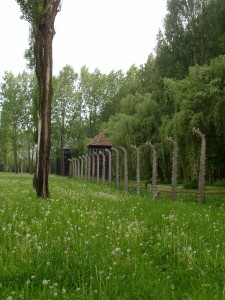
The fields of Auschwitz-Birkenau 60 years later…
And so I return to the first paragraph of this piece of writing. Suffering, evil, injustice, and the secrets and wellsprings of pain they involve, are all a part of the human condition. We may struggle mightily to free ourselves and others from such linkages, but this will require our deliberate creation and use of other, much more positive linkages binding us to others. And so I will also consider, in the space of the website, the kinship of joy, nurturance, and beauty.
